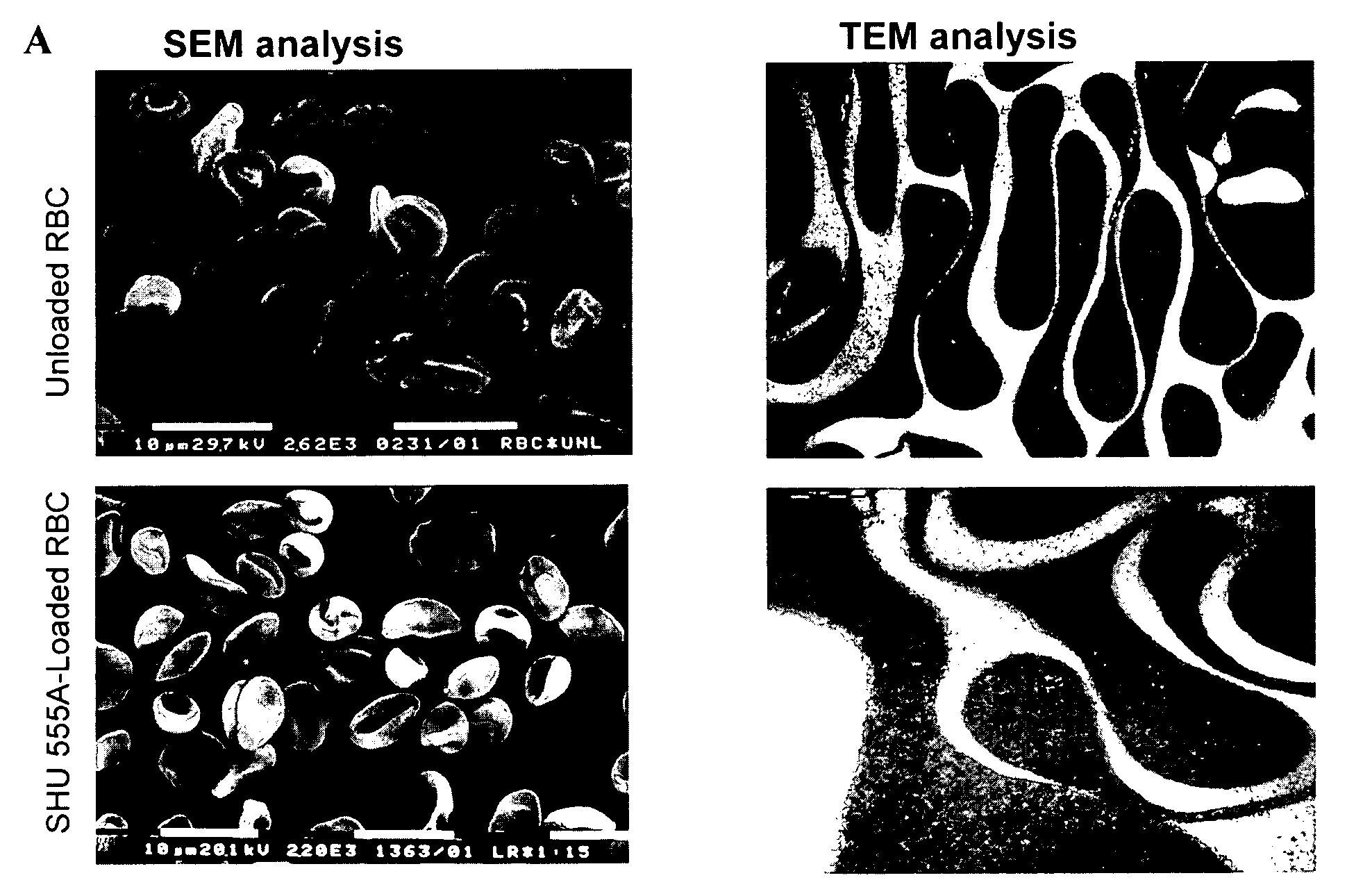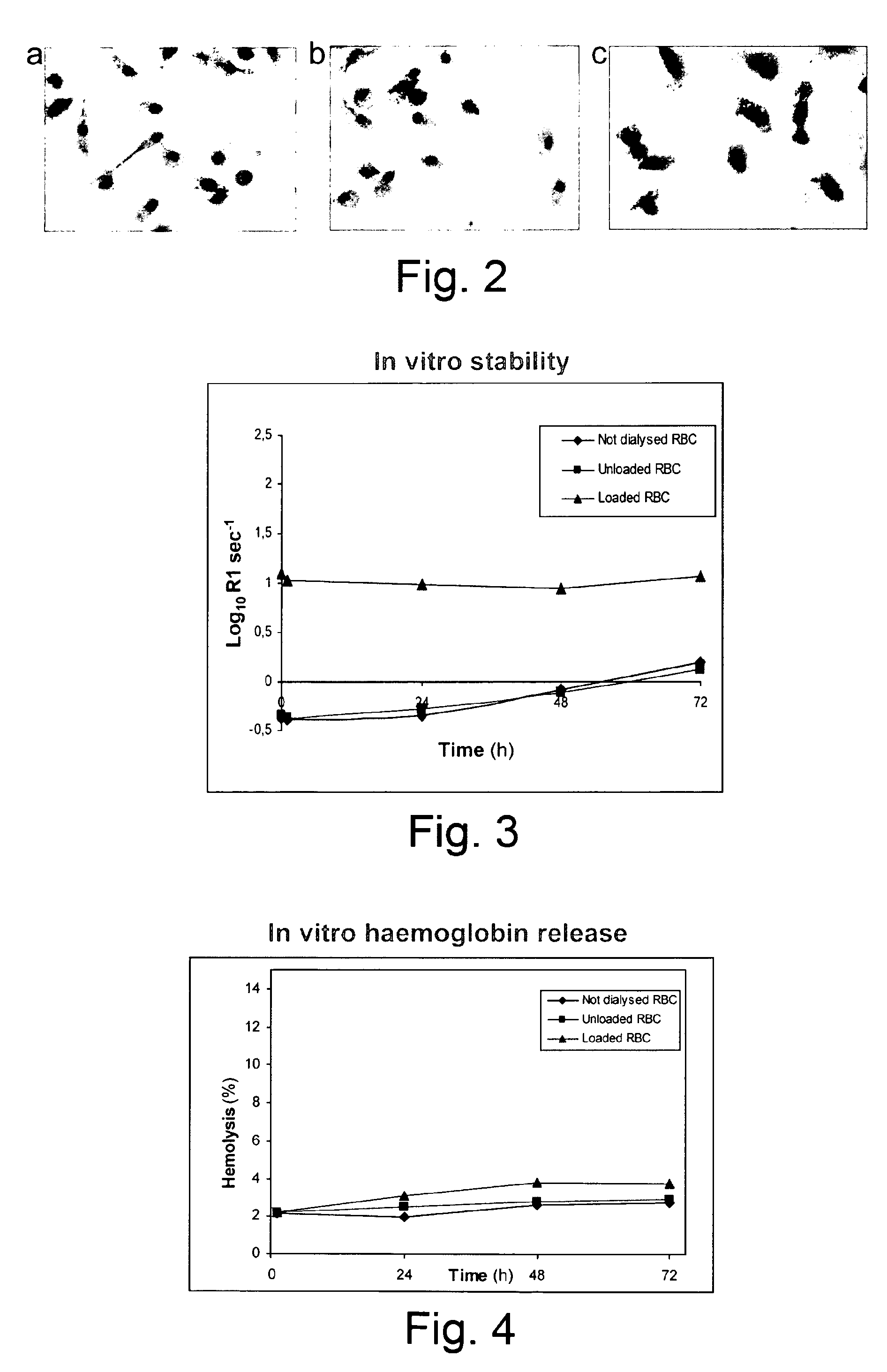Delivery of contrasting agents for magnetic resonance imaging
a magnetic resonance imaging and contrasting agent technology, applied in the field of contrasting agent formulations, can solve the problems of short half life in circulation, concomitant risk of thrombosis, short time imaging window, etc., and achieve the effect of increasing the resolution of resonance imaging and lowering the t2* relaxation tim
- Summary
- Abstract
- Description
- Claims
- Application Information
AI Technical Summary
Benefits of technology
Problems solved by technology
Method used
Image
Examples
Embodiment Construction
Materials and Methods
Materials
[0074]Erythrocytes loading procedure was performed with a commercially available ferrofluid SHU 555A (Resovist, 0.5 mmol Fe / ml) obtained from Schering pharmaceutical company, consisting of superparamagnetic iron oxide nanoparticles carboxydextran coated, 60 nm in diameter.
[0075]This particulate suspension is generally used to enhance the signal from magnetic resonance imaging (MRI) examinations. Silica coated magnetite nanoparticles suspension, SiMagn (27 mg / ml) with a size of around 40-140 nm was also used.
Encapsulation of Magnetic Nanoparticles in Human Erythrocytes
[0076]Human blood was collected from healthy volunteers into heparinised tubes.
[0077]Red blood cells (RBCS) were isolated by centrifugation at 1400 g at 4° C. for 10 min from freshly drawn blood. The serum and buffy coat were removed and the packed cells were washed three times with Hepes buffer (10 mM Hepes, 140 mM NaCl, 5 mM glucose, pH 7.4) and then resuspended in the same buffer at a 70...
PUM
 Login to View More
Login to View More Abstract
Description
Claims
Application Information
 Login to View More
Login to View More - R&D
- Intellectual Property
- Life Sciences
- Materials
- Tech Scout
- Unparalleled Data Quality
- Higher Quality Content
- 60% Fewer Hallucinations
Browse by: Latest US Patents, China's latest patents, Technical Efficacy Thesaurus, Application Domain, Technology Topic, Popular Technical Reports.
© 2025 PatSnap. All rights reserved.Legal|Privacy policy|Modern Slavery Act Transparency Statement|Sitemap|About US| Contact US: help@patsnap.com



